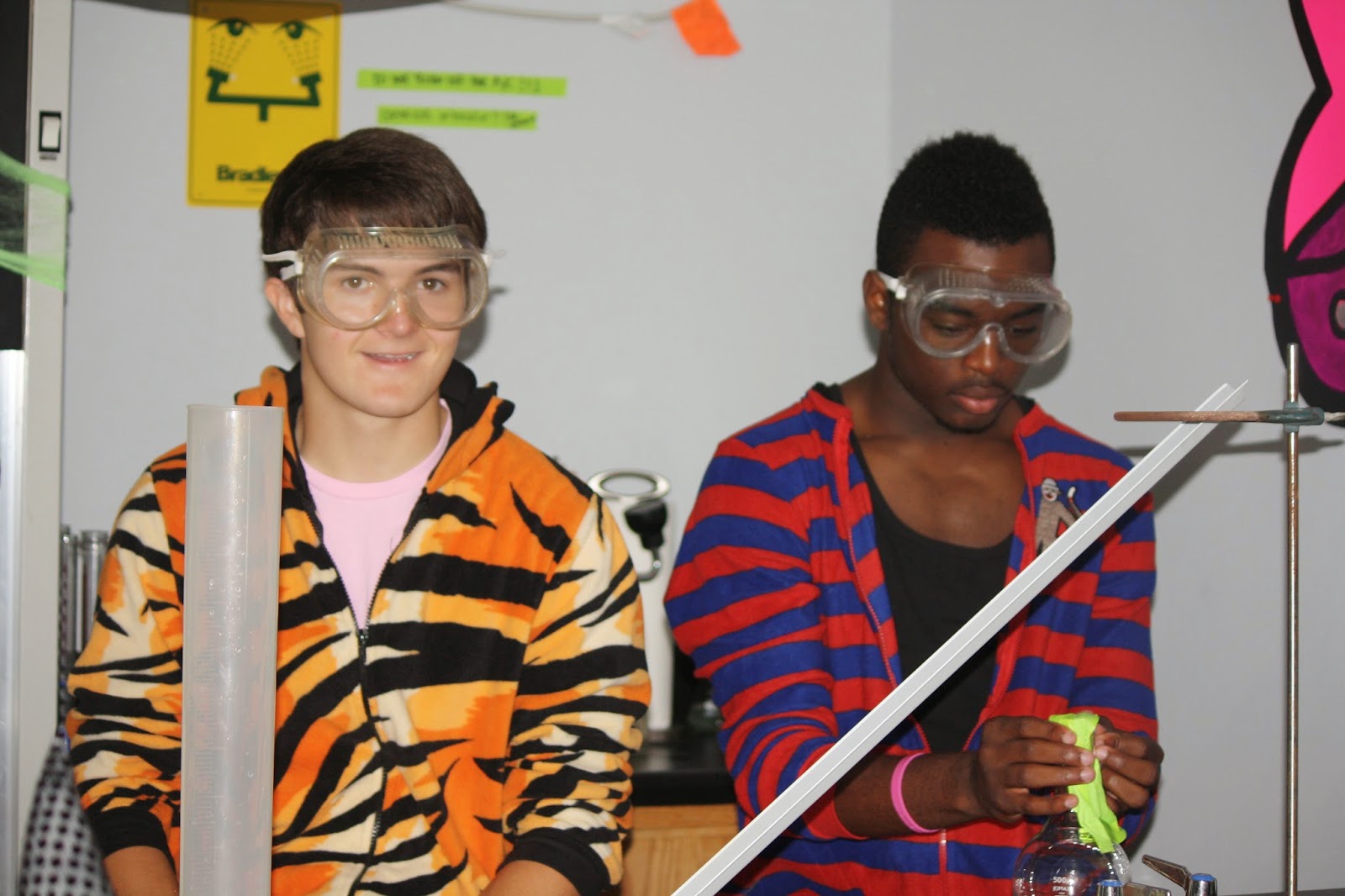Monday:
Alabama
Course of Study Objective : 3.) Use the periodic table to identify periodic trends,
including atomic radii, ionization energy, electronegativity, and energy
levels.Utilizing electron configurations, Lewis dot structures, and orbital
notations to write chemical formulas Calculating the number of protons,
neutrons, and electrons in an isotope Utilizing benchmark discoveries to
describe the historical development of atomic structure, including
photoelectric effect, absorption, and emission spectra of elements
Class starter:
Define an atom and tell the 3 subatomic particles and their charges.
In class: Students will compare the wave and particle
natures of light.
Define a quantum of energy, and explain how it is
related to an energy change of matter.
Contrast continuous electromagnetic spectra and atomic
emission spectra.
Homework: define chapter 5 vocabulary due Wednesday
Tuesday
:
Alabama
Course of Study Objective : 3.) Use the periodic table to identify periodic trends,
including atomic radii, ionization energy, electronegativity, and energy
levels.Utilizing electron configurations, Lewis dot structures, and orbital
notations to write chemical formulas Calculating the number of protons,
neutrons, and electrons in an isotope Utilizing benchmark discoveries to
describe the historical development of atomic structure, including
photoelectric effect, absorption, and emission spectra of elements
Class starter:
Describe the wave nature of light.
In class: Students will continue to compare the wave and particle
natures of light.
Define a quantum of energy, and explain how it is
related to an energy change of matter.
Contrast continuous electromagnetic spectra and atomic
emission spectra.
Homework: define chapter 5 vocabulary due Wednesday
Wednesday
:
Alabama
Course of Study Objective : 3.) Use the periodic table to identify periodic trends,
including atomic radii, ionization energy, electronegativity, and energy
levels.Utilizing electron configurations, Lewis dot structures, and orbital
notations to write chemical formulas Calculating the number of protons,
neutrons, and electrons in an isotope Utilizing benchmark discoveries to
describe the historical development of atomic structure, including
photoelectric effect, absorption, and emission spectra of elements
Class starter:
Describe the particle nature of light.
In class: Compare the Bohr and quantum mechanical models of
the atom.
Explain the impact of de Broglie's wave article duality
and the Heisenberg uncertainty principle on the current view of electrons in
atoms.
Identify the relationships among a hydrogen atom's energy
levels, sublevels, and atomic orbitals.
Homework: Study the chapter 5 vocabulary for
vocabulary quiz on Thursday.
Thursday:
Alabama
Course of Study Objective : 3.) Use the periodic table to identify periodic trends,
including atomic radii, ionization energy, electronegativity, and energy
levels.Utilizing electron configurations, Lewis dot structures, and orbital
notations to write chemical formulas Calculating the number of protons,
neutrons, and electrons in an isotope Utilizing benchmark discoveries to
describe the historical development of atomic structure, including
photoelectric effect, absorption, and emission spectra of elements
Class starter:
study for vocabulary quiz.
In class: vocabulary quiz. Continue to compare the Bohr and quantum
mechanical models of the atom.
Explain the impact of de Broglie's wave article duality
and the Heisenberg uncertainty principle on the current view of electrons in
atoms. Apply the Pauli exclusion
principle, the aufbau principle, and Hund's rule to write electron
configurations using orbital diagrams and electron configuration notation.
Define valence electrons, and draw electron-dot
structures representing an atom's valence electrons.
Identify the relationships among a hydrogen atom's energy
levels, sublevels, and atomic orbitals.
Homework: Study notes
Friday:
Alabama
Course of Study Objective : 3.) Use the periodic table to identify periodic trends,
including atomic radii, ionization energy, electronegativity, and energy
levels.Utilizing electron configurations, Lewis dot structures, and orbital
notations to write chemical formulas Calculating the number of protons,
neutrons, and electrons in an isotope Utilizing benchmark discoveries to
describe the historical development of atomic structure, including
photoelectric effect, absorption, and emission spectra of elements
Class starter:
What does the Pauli exclusion principle explain?
In class: Apply the Pauli exclusion principle, the aufbau
principle, and Hund's rule to write electron configurations using orbital
diagrams and electron configuration notation.
Define valence electrons, and draw electron-dot
structures representing an atom's valence electrons.
Identify the relationships among a hydrogen atom's energy
levels, sublevels, and atomic orbitals.
Homework: Study notes
















































































